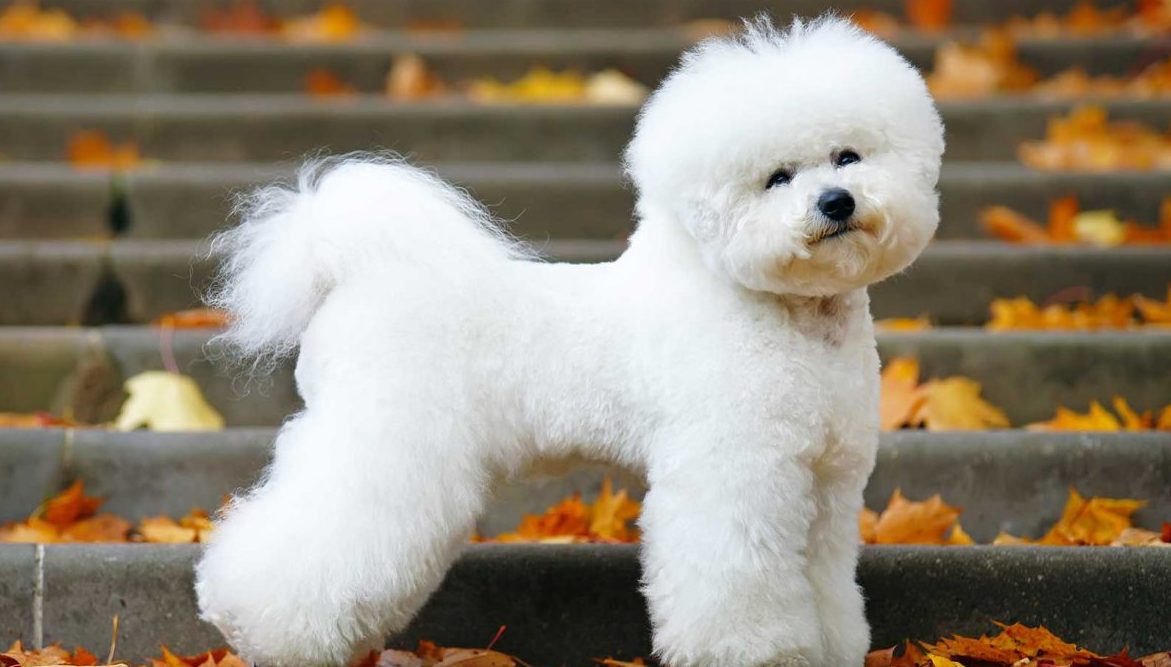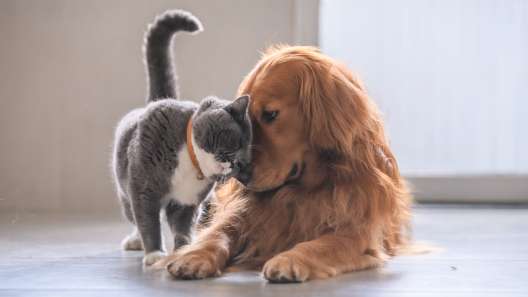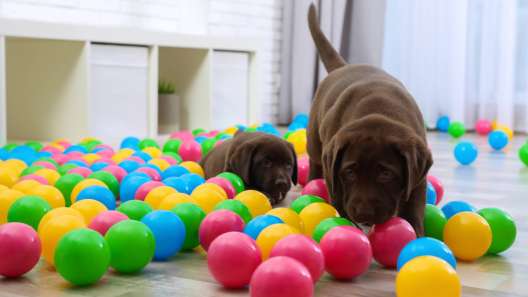-
Activity Level:
moderate
-
Shedding Level:
low
-
Grooming Level:
high
-
Trainability:
high
-
Good for Novice Owners:
high
-
Adaptability:
high
-
Kid/Pet Friendly:
often
-
Prey Drive:
low
-
Watchdog:
aware
- Average Size: Small
- Average Lifespan: 14-15 years
- Registered?: aca, akc
Bichon Frise Dog Breed Information
Overview
Temperament
Adaptability
Health
Owner Experience
Grooming
Activity Level
Size
Life Span
Did You Know?
The Bichon Frise has a long history and is considered part of the Barbichon breed types. Barbichon refers to the ancient dog breeds that make up a clan of little white dogs. It includes the Bichon Frise, Bolognese, Maltese, and Havanese.
The Spanish used the Bichon breed type as sailing dogs and brought them to Tenerife, the largest island of the Canary Islands, where the breed became known as the Bichon Tenerife. These dogs were also popular with the Italian nobility in the 14th century.
However, one of the facts about the Bichon Frise is that it was the French that developed the Bichon into the gentle lap dog we know as today’s Bichon Frise. The AKC first recognized the Bichon Frise in 1971 and it gained full breed recognition in 1973 as part of the Non-Sporting Group.
The Bichon Frise is a companion breed through and through, so it’s no surprise they are considered one of the most affectionate dog breeds. They have a gentle and playful temperament.
They love to cuddle and play and are very good with children and other pets. Well-socialized Bichons have happy-go-lucky and friendly personalities. They can make good watchdogs as they will bark to alert you, but are more interested in making friends and receiving attention than acting as a protector.
The Bichon Frise is highly adaptable. Although they thrive in a house with a fenced-in yard, they can adapt very well to apartment living as long as they plenty of attention and some exercise every day.
They do well in most climates. As with most dog breeds, they are sensitive to heat and extreme cold. Bichon Frise can adjust to about any lifestyle as long as they can spend time with their families and don’t have to spend a lot of time alone.
Potential health concerns to be aware of in Bichon Frise can include bladder infections, cataracts and other eye diseases, and patellar luxation. Good breeding practices can cut down on some of these health issues and make a big difference in the health of puppies.
Reputable breeders will screen their dogs to avoid passing preventable issues to puppies. So, make sure you ask about the health and genetic history of both parents and about any health tests that have been done. The national breed club recommends a hip evaluation, ophthalmologist evaluation, and patella evaluation at a minimum. These little dogs can also be prone to allergies, but there are ways to help your dog survive seasonal allergies to help them get through it.
The Bichon Frise is one of the best dog breeds for first-time owners. A Bichon Frise loves to learn and loves to perform, which generally makes them easy to train. Although they have a reputation for being difficult to house train like many other small dog breeds, they respond very well to training with positive rewards.
It’s important their training stays positive. They have a sensitive, gentle nature and harsh or negative training methods tend to be ineffective and can damage the bond you have with your dog. As with all dogs, early socialization is important for a puppy to grow into a well-rounded dog. Although the Bichon is relatively easy to train, puppy training classes are a great resource for supplementary training, socialization, and more.
The Bichon Frise is one of the fluffiest dog breeds. Common coat colors are light, appearing as white, white & apricot, white & cream, or white & buff. This dog breed’s coat is long and curly. It’s known for being soft to the touch and hypoallergenic.
Daily brushing is recommended to keep their coat tangle-free and looking its best, but 2-3 times a week will usually be sufficient in a pinch to prevent matting. Bichons also need to be bathed and clipped once a month. Some owners learn to do this themselves at home while others take their dogs to a professional dog groomer.
In addition to coat care, you will also need to take care of your Bichon Frise’s nails, ears, and teeth. Eyes and ears should be checked weekly and carefully cleaned as needed. Their nails should be trimmed once or twice monthly and their teeth should be brushed regularly.
Daily tooth brushing, along with cleanings at the vet when needed, is ideal dental care for dogs. It’s important to get your puppy used to having their mouth, ears, and paws handled to make regular care easier as they grow.
The Bichon Frise has a moderate activity level on average. They are known for having sudden, short bursts of high energy. You may find your Bichon suddenly racing around the house or yard during one of these energy bursts. Although some may seem to last a while, the Bichon Frise is a small dog and will tire out soon enough.
Daily walks and regular play sessions will help your pup get plenty of exercise. This dog breed is also a good fit for training in dog sports like agility, rally, and obedience. They can also be found as working dogs and tend to enjoy working as therapy dogs.
In between high-activity bursts, your Bichon will prefer napping or cuddling with you. This dog does not like to be left alone for long periods of time. A bored or lonely Bichon Frise can start to exhibit undesirable behavior like whining, barking, or chewing and can develop separation anxiety.
Fully-grown Bichon Frise usually stand 9-12 inches at the shoulder and weigh 12-18 pounds.
A Bichon Frise generally lives for 14-15 years on average.
The Bichon Frise appears in many famous dog paintings and makes a number of appearances in several of Goya’s paintings.









